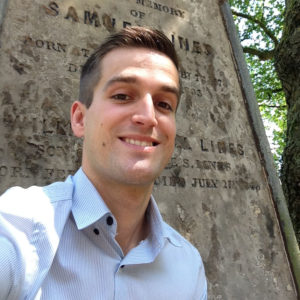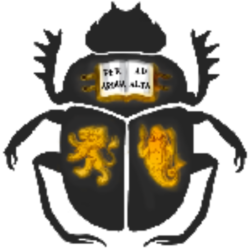
Much of what we know about Ancient Egypt is based on their attitudes towards death, burial, and remembrance. The grand monuments of the Theban West Bank, with its huge temples and brightly coloured tombs, hint at the great emphasis placed by the ancient Egyptians on their burial and subsequent journey to the afterlife.
While these standing relics of ancient belief and ritual tell us much about the ideas of afterlife, this exhibition aims to consider the human implications of dying in Ancient Egypt; where did the funeral take place, what emotions were expressed during periods of mourning, why did the Egyptians mummify their dead, and how did you secure a successful resurrection in the afterlife?
‘Toward the Horizon’ is expected to be a growing catalogue of short essays about dying in Ancient Egypt. If you feel you have a topic worthy of adding to the exhibition, can write 500 words about it, make it accessible to a broad audience, and have some museum objects that can help explain it then why not consider contributing to this growing exploration of Egypt’s past?
Click the links below to explore…
Osiris: The mythological origins of mummification by Stacey Anne Bagdi
Mummification: Techniques, development, and study by Stephanie Boonstra
‘Go West’: The Theban funerary landscape by Carl Graves
Gestures of grief: Mourning and the funeral procession by Emily Millward
Would you like to contribute a piece? Contact Birmingham Egyptology here.
About the contributors
 Carl Graves is a final year PhD candidate in Egyptology at the University of Birmingham and also the Education and Public Engagement Manager at the Egypt Exploration Society. He was previously the Postgraduate Curator of the Eton College Myers Collection of Egyptian Antiquities currently on loan to the University of Birmingham. He has also volunteered at Birmingham Museum and Art Gallery from 2008 until 2014. (cxg653@bham.ac.uk)
Carl Graves is a final year PhD candidate in Egyptology at the University of Birmingham and also the Education and Public Engagement Manager at the Egypt Exploration Society. He was previously the Postgraduate Curator of the Eton College Myers Collection of Egyptian Antiquities currently on loan to the University of Birmingham. He has also volunteered at Birmingham Museum and Art Gallery from 2008 until 2014. (cxg653@bham.ac.uk)
Emily Millward is a Birmingham alumna, former BE and CRE Bham committee member, and worked for RCC. She now works with the Shakespeare Birthplace Trust.
Stacey Anne Bagdi completed her undergraduate degree at the University of Birmingham and gained an MA at the University of Leiden. She currently works and volunteers at BMAG, and is Chair of West Midlands Egyptology Society.
Stephanie Boonstra is a PhD student in Egyptology at the University of Birmingham and is also the current Postgraduate Curator of the Eton College Myers Collection of Egyptian Antiquities currently on loan to the University of Birmingham. Her research focus is on Eighteenth Dynasty Scarabs and she is currently curating the Objects Come to Life (autumn 2016) exhibition in the Eton Myers Collection.
Acknowledgements
This exhibition has been in preparation since November 2013 and it is thanks to many people around Birmingham that it has been brought to Birmingham Egyptology. Firstly, the organisers would like to thank Dr June Jones from the University of Birmingham who first inspired the project by drawing their attention to the collections of the Medical School. Of course, our gratitude goes to Adam Jaffer of Birmingham Museum and Art Gallery, Dr Martin Bommas from the University of Birmingham Department of Classics, Ancient History and Archaeology Eton Myers Collection, and Clare Mullet from the University of Birmingham Research and Cultural Collections for the use of artefacts in their care for the exhibition. Much hard work went into the digitisation of the two skulls held at the University of Birmingham by Sarah Chapman (PhD candidate at the University), and of course their x-raying by Pieta Greaves from Birmingham Museums Trust – to both we offer our sincere thanks.
To all of the contributors to the exhibition so far, thank you for your patience and work – and to those not yet submitted, we look forward to it!
